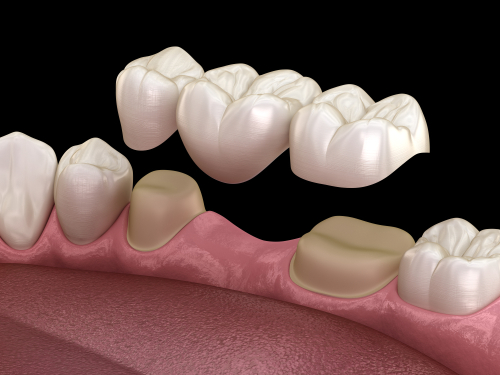
If you have one or several missing teeth, you can benefit from dental restoration. A dental bridge can restore the appearance and function of your teeth while improving your smile. The artificial teeth consist of dental crowns attached to the teeth on each side of the gap. Designed to look like natural teeth, they fill the gap created by the missing teeth.
Understanding Dental Bridges
Dental bridges are restorations made from abutment teeth and pontics. They replace teeth missing due to injury, decay, or gum disease. Some people have missing teeth from a congenital condition.
To get a bridge, the teeth on either side of the gap must be healthy. Failing to replace a missing tooth can cause neighboring teeth to shift into the space, causing misalignment. It can lead to bite and chewing problems, toothaches, and jaw pain, as well as affect your overall appearance.
Types of Dental Bridges
The four types of dental bridges are:
Traditional fixed bridges. They are made from ceramics, metal, or porcelain fused to metal. The crowns and filler teeth are connected
Implant-supported bridge. It is similar to a traditional bridge, but implants instead of natural teeth support the device
Cantilever bridge where the pontic connects to one natural or abutment tooth
Resin-bonded bridge (Maryland dental bridge). Made from ceramic or porcelain fused with metal, the bridge usually replaces missing front teeth
How Dental Bridges Work
Patients require two or more appointments to get dental bridges. During the first appointment, the dentist gets the abutment teeth ready. Reshaping the teeth involves the removal of part of the enamel and dentin to accommodate the crown.
The dental practitioner takes dental impressions or a digital scan. The lab uses the scan or mold to create the bridge, crowns, and artificial teeth. You will receive a temporary bridge while the lab creates your customized bridge. The second appointment involves the placement of the permanent bridge and making necessary adjustments.
Benefits of Dental Bridges
There are several reasons to get dental bridges.
Their benefits include:
They help improve your bite
They improve your ability to speak and chew
They keep the remaining teeth from shifting from their position
They help restore your smile
Help maintain facial shape
Results of Dental Bridge Treatment
If you take proper care of your bridges, they can last up to seven years without presenting complications. If the bridge loosens, the dentist can apply new cement to reattach it. It happens only if the supporting teeth are intact and healthy.If the neighboring teeth develop decay, the bridge can fail. It is vital to maintain good oral hygiene when wearing bridges. With regular professional dental cleaning, your bridge can last over ten years.
When you replace your missing teeth, you will find eating easier. However, eat soft foods until you get used to the dental bridge. Ensure you prevent decay and gum disease, which can cause tooth loss. Taking care of your teeth and gums will help you maintain your smile.
For more on dental bridges and how they work, visit River Valley Dental at our Tremonton, Utah, office. Call 435.257.7344 to schedule an appointment today.










